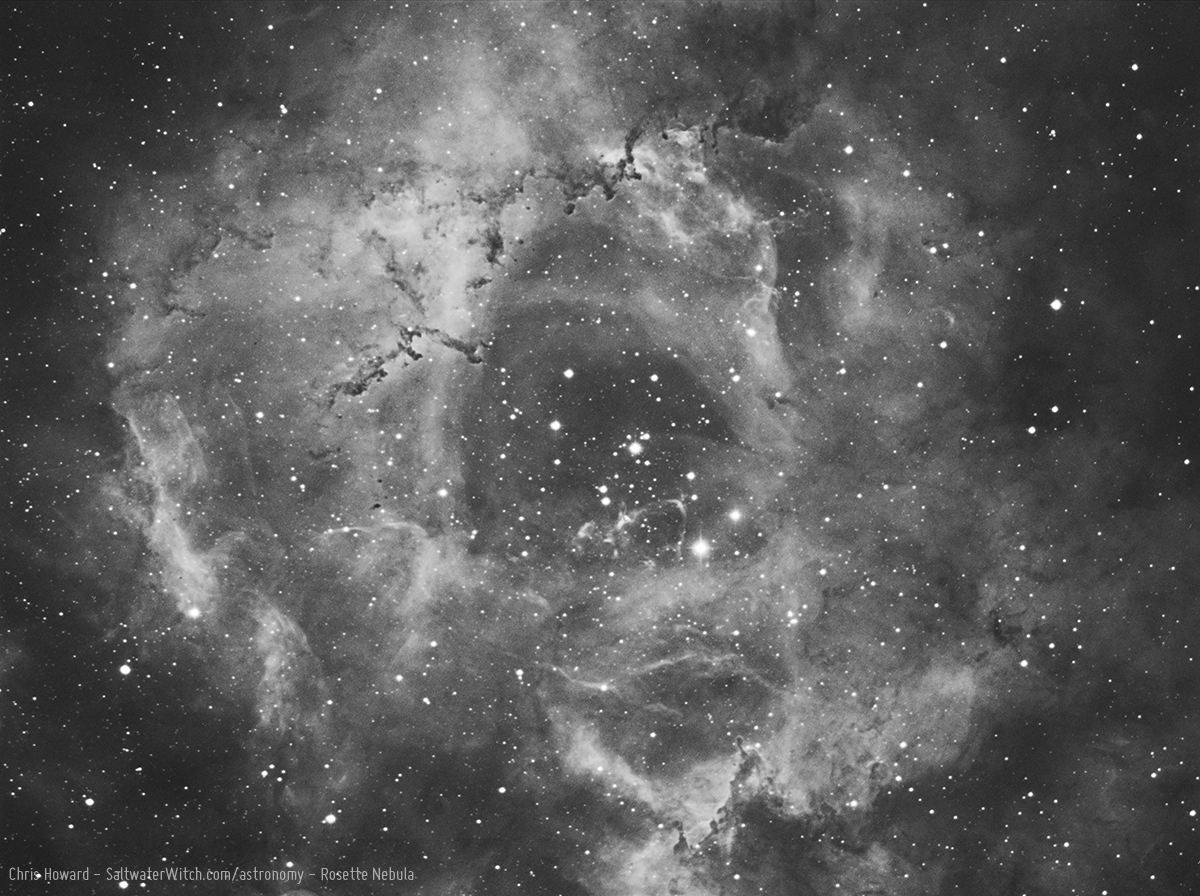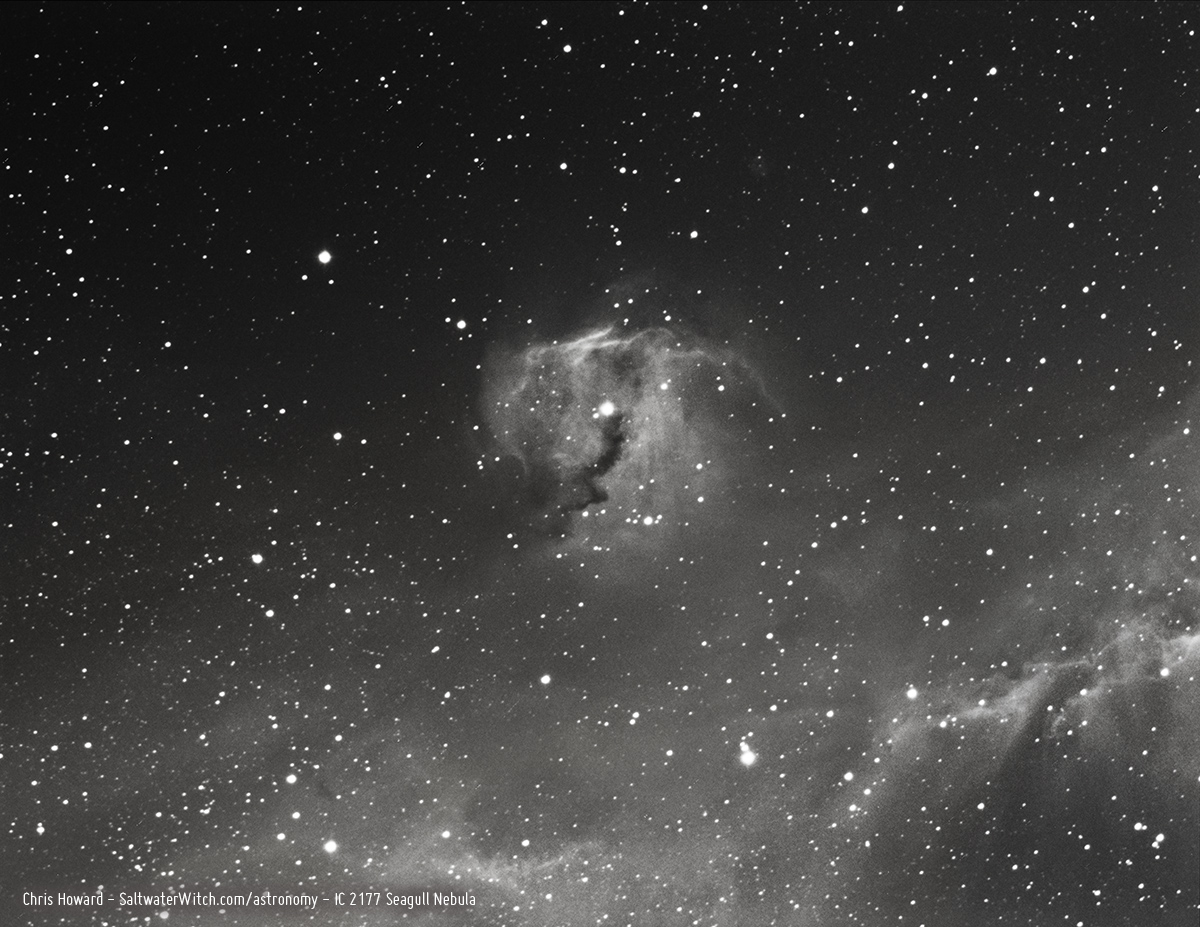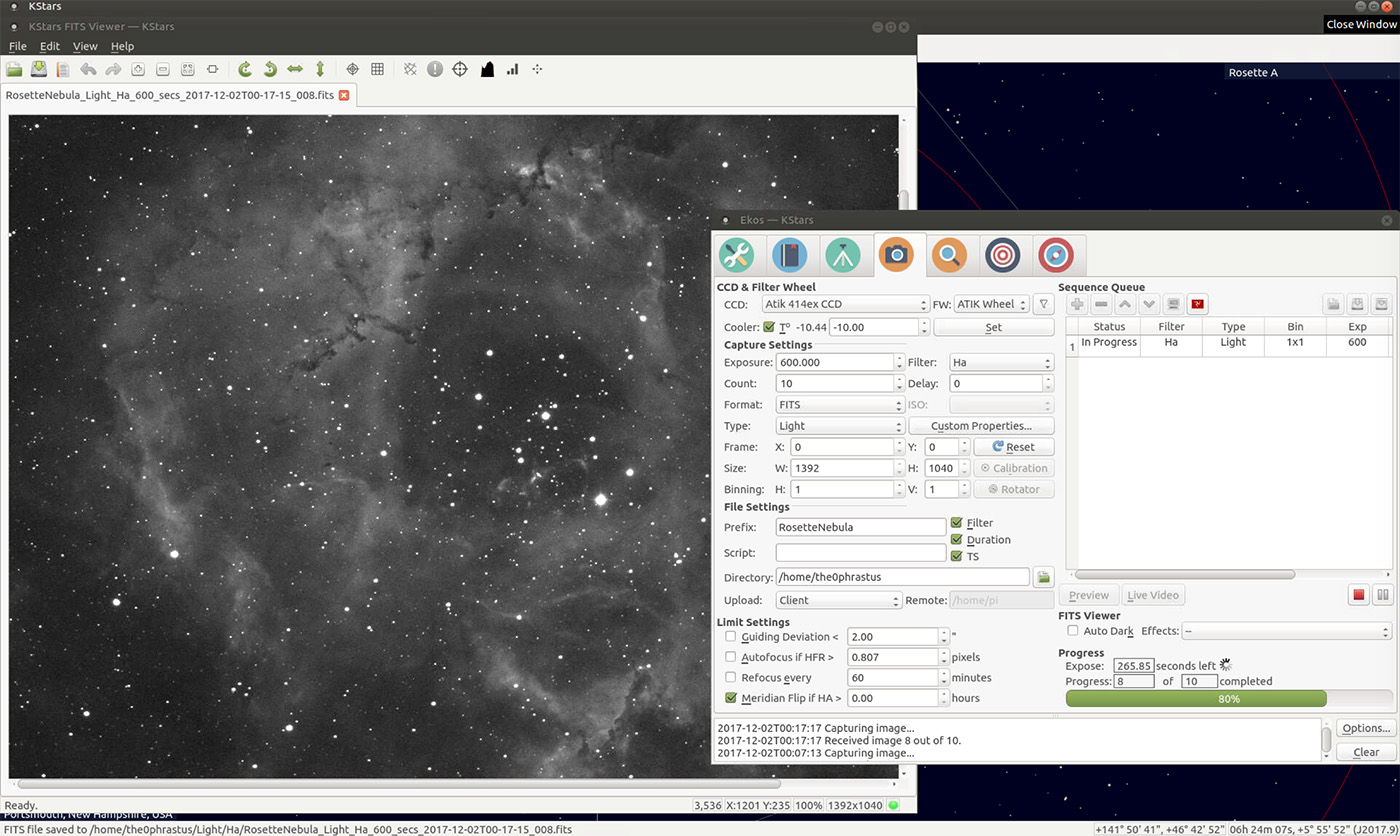Astro Session - December 1, 2017
December 1, 2017
We were very close to a full moon last night, so my astro imaging options were limited to narrowband. I spent most of the night with Hydrogen-alpha, an inexpensive 12nm Astronomik filter, but as you can see, able to bring out some fantastic contrast, depth, and details throughout this region of interstellar ionized hydrogen. (This is the filter I currently have in the 1.25" wheel. My Baader 6nm Ha is in the 2" filter wheel)
The "Rosette Nebula" is a cluster of nebulosity that includes NGC 2237, NGC 2238, NGC 2244, NGC 2239, NGC 2246 and more. The Rosette is a bright mag 9 area of the sky about 1.3° across in the constellation Monoceros. (subframe info: 28 600 second exposures in hydrogen-alpha, no calibration frames, Atik414Ex mono CCD running at -10C, Astronomik 12nm Ha filter, William Optics GT-81, CEM25P EQ mount, WO 50mm guidescope with ZWO ASI120S-MM guide cam, INDI/KStars/Ekos observatory control). https://www.astrobin.com/324406/

One of many reasons I love the Atik 414EX is how clean (free of noise) the light frames are when you cool the sensor down to -10C or below. I didn't shoot dark frames, or any other calibration frames last night, and didn't use any from my library when stacking.
My last target of the night: center portion of IC 2177, the "Seagull Nebula" in the constellation Monoceros. There's noise that showed up during stretching, but this one of IC 2177 is just 4 stacked Ha frames, each 600 seconds.

Here's a screenshot of Ekos and KStars, in the process of capturing 600 seconds of photons landing in my backyard from the Rosette Nebula. This is pretty much what I see--the tools I work with--when remotely controlling the mount, telescope, cameras, targeting, focusing, plate solving, and more. And that's what a single 600-second frame looks like. With stacking I'm obviously getting a lot more signal to noise.

